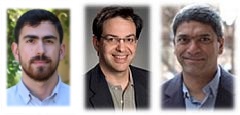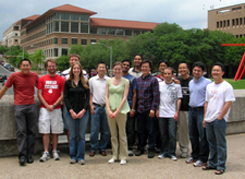


WHO WE ARE
The MUSE group (Mechanics, Uncertainty, and Simulation in Engineering) is a small team of students and faculty in the Department of Civil, Architectural and Environmental Engineering at The University of Texas at Austin.
Our areas of expertise cover broad as well as focused topics in mechanics and structural engineering. These include earthquake engineering and structural dynamics, wind engineering, reliability and risk assessment of components and systems, uncertainty quantification, computational mechanics, wave propagation, soil-structure interaction, acoustics, inverse problems and imaging, coupled physics problems, metamaterials, computational materials, soft, and multi-functional materials.
We typically engage 20-25 graduate students annually in our projects. Over the last few years our research has been supported by federal (NSF, DOE, DOI), state (TxDOT), as well as industry and private sponsors (American Iron and Steel Institute, BP America Production Company, BC Hydro, KAUST).
We strive to prepare our students with “next-generation” problem solving skills so that they meet the engineering challenges of tomorrow. Our graduates are employed by engineering consulting and design firms, engineering companies offering specialized and high-value services, the offshore oil and gas industry, and academic institutions worldwide.
OUR VISION
Through our teaching and research endeavors we seek to communicate what we have come to know and understand, and what we continue to learn.
Though Civil Engineering is arguably the oldest and most mature engineering discipline, interesting problems, both grand and small, continue to emerge, or have remained challenging through the course of time. We believe that novel approaches, sometimes borrowed from ancillary science and engineering disciplines or made possible due to modern innovative tools and sensing capabilities, can lead to interesting solutions to even the most traditional and well-researched problems in Civil Engineering. Guided by our own training, with its traditional and non-traditional threads, we seek to facilitate this cross-fertilization, whether, for example, benefiting from advances in information technology and high-performance computing, from uncertainty propagation in the mathematical sciences, or from nanotechnologies from physics and the material sciences. Though our focus is chiefly on problems affecting the infrastructure and the built environment, our reach goes well beyond as we address bigger societal questions related to energy, natural and man-made disasters, and physical/natural processes at various temporal and spatial scales.
As with our open-ended inquiry in research endeavors, in teaching as well, we strive to train our students to become members of the next generation of engineers where multi-disciplinary expertise will be necessary in order to remain competitive and to be able to partake in the shaping of a world where traditional technical disciplines will almost certainly be less compartmentalized than has been the case thus far.
It is our belief that by embarking on non-traditional approaches in science and engineering that a mature field like ours can make non-incremental transformative progress. This is our muse…